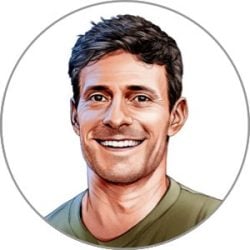As a bread baker, you might find yourself in the same situation as I am: scattered bags of flour in the pantry, some with just little bits of this and that, all waiting their turn for the next bake. While some of these flours—notably, the white variety—are fine to wait around a bit, the whole-grain ones need their turn sooner rather than later. But what’s the best way to store flour if you don’t think you’ll get to use it soon? In this post, let’s tackle that question head-on.
The following is most important when thinking about the best way to store flour:
- Degradation of the lipids (oils) in flour is the main cause of flour spoilage
- Moisture, oxygen, and light will reduce the shelf life of your flour
- Store your flour (or whole berries!) well-wrapped and in the freezer
Now, let’s look into more detail on what happens when flour goes bad and the best way to store flour long-term to make sure you use it for optimal baking performance and taste.
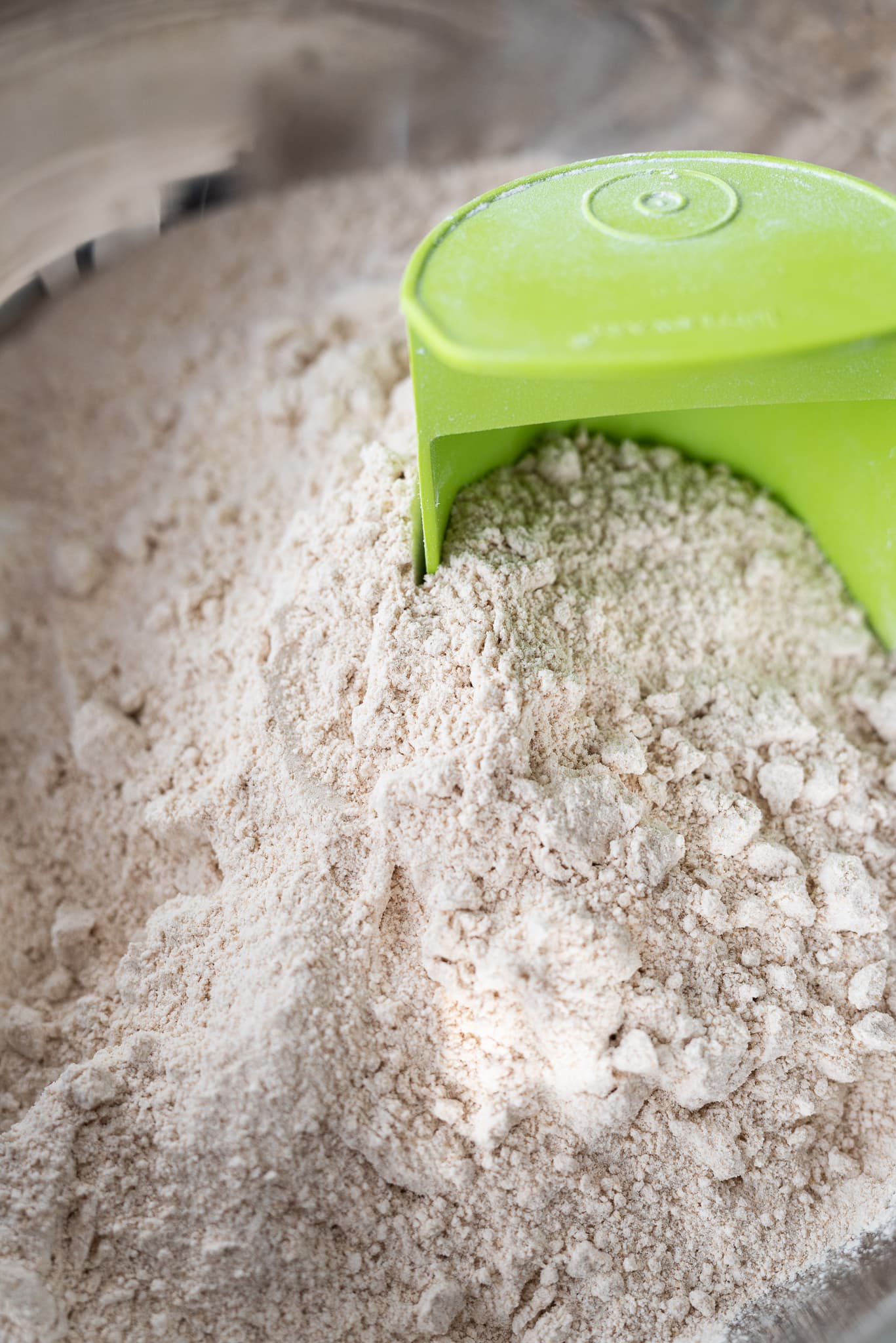
Why does flour go bad?
When whole grain berries are milled, the protective outer bran layer is broken open, exposing the interior components (germ, endosperm, etc.) to oxygen and likely increased moisture. In addition to these components, the grain also contains a small but significant lipid (oil) content which is unstable and is the first to spoil. Degradation of the lipids in the flour is the main cause of poor flour performance and a lack of favorable flavor and aroma.
The science behind flour spoilage
Flour spoilage is primarily due to two causes: hydrolytic rancidity (water-related rancidity) and oxidative rancidity (oxygen-related rancidity), where hydrolytic rancidity typically is the first to take place, followed by oxidative.
Hydrolytic rancidity is due to lipase enzyme activity, which increases when sufficient moisture is available. Lipase hydrolyzes triacylglycerols to non-esterified fatty acids, resulting in flour with reduced baking performance, a bitter flavor, and off aromas.
Oxidative rancidity occurs enzymatically as lipoxygenase works to rapidly oxidize the non-esterified fatty acids present from the work of lipase enzyme activity and also through non-enzymatic oxidation as the flour is exposed to the atmosphere. Both forms result in reduced baking performance, nutrition (because of a loss of fatty acids), flavor, and an off aroma.
How long can you store your flour?
How long does flour last? A question I get asked so often! Generally, the more whole grain the flour, the shorter its shelf life (for reasons discussed above) if kept in the same conditions. Regardless of the flour type, it’s always best to keep it wrapped in an airtight container in the freezer.
White flour, such as all-purpose or high-protein bread flour, typically has a use-by date between 9 to 15 months. I like to use my white flour within 12 months of the milling date (if it’s listed). If you buy your flour at the market, it should have a best-by date printed on the sack.
Whole grain flour such as whole wheat or white whole wheat flour typically has a use-by date between 3 to 9 months of the milling date. I like to use my whole wheat flour as soon as possible if kept out on the counter, 6 months if kept in the refrigerator, or longer if in the freezer.
High-extraction flours, like Type-85, have a higher percentage of the bran and germ present in the flour. As such, I tend to treat these flours like whole grain flour and use them as soon as possible. In my experience, their shelf life is typically somewhere between 6 and 12 months (earlier is better!).
| Flour type | Shelf life (from milling date) |
|---|---|
| White flour (e.g., all-purpose or bread flour) | Around 12 months |
| Whole grain flour (e.g., whole wheat, whole spelt) | Around 6 months |
| High extraction (e.g., type-85) | Around 6 to 12 months (earlier is better) |
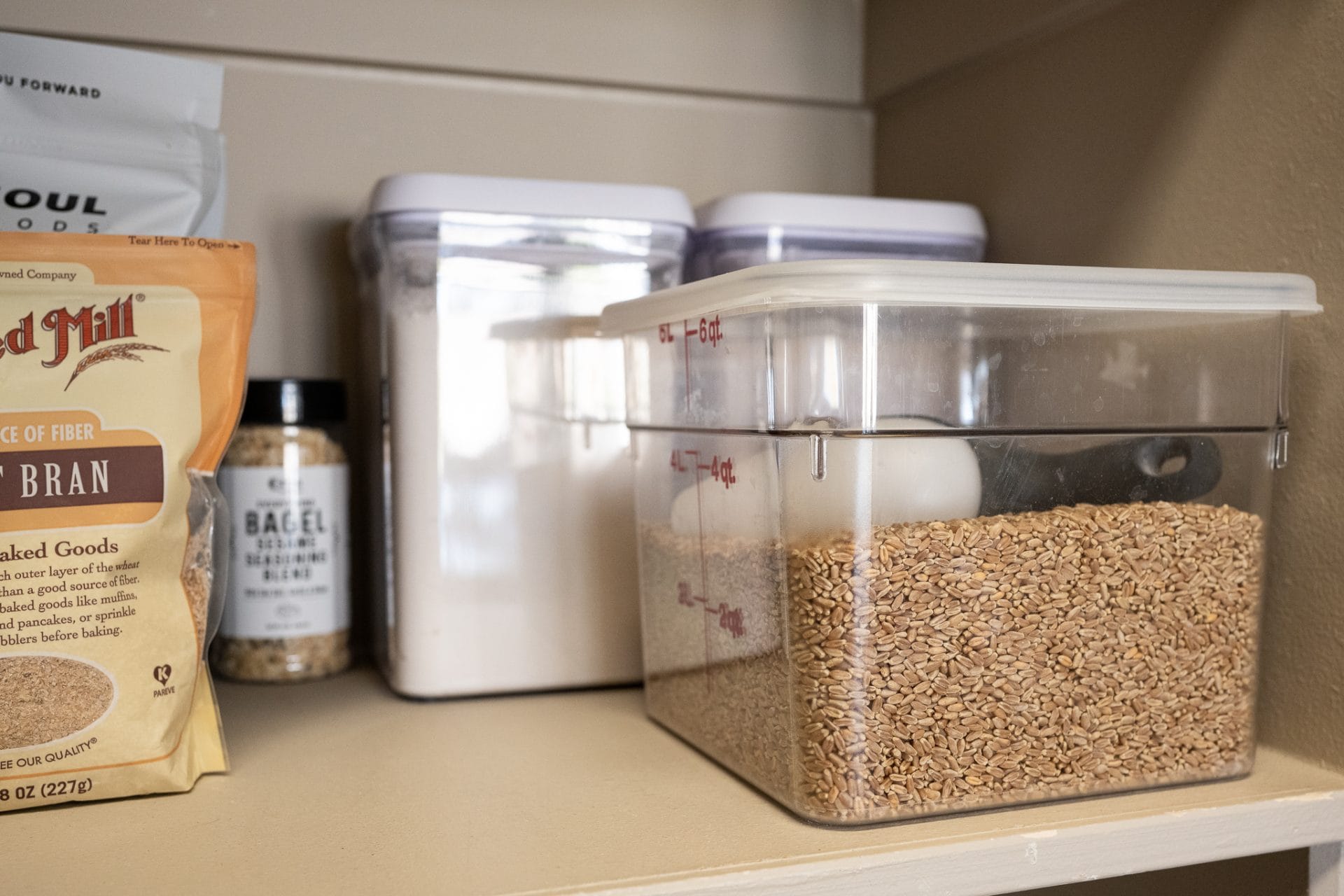
Keep in mind that in some locations worldwide, especially those with very high humidity, flour stored in the pantry will likely spoil much faster than in drier locations. In these locations, it might be advisable to always store your flour in the fridge/freezer, if possible.
How can you tell if your flour has gone bad?
The primary means for determining if your baking flour has gone bad is the smell. Flour that’s gone bad typically has an off smell to it, sometimes described as “musty,” rubber-like, or waxy. In my experience, it’s a smell that’s hard to quantify, but you know it when you smell it—to me, it’s a cross between sour and waxy crayons.
In terms of baking performance, flour that has gone bad tends to present in a loaf of bread with reduced volume and a pale, weakly colored crust. The flavor will also be off, usually taking on bitter notes, which are especially pronounced with whole grain flour (and there reason many think whole wheat flour is bitter by nature).
Now that we’ve looked at why a flour spoils, let’s look at the best way to store flour to keep it fresh for longer.
The best way to store white flour
White flour has a large portion of the bran and germ removed during milling. Because the bran and germ are where the highest concentration of lipids (oils) reside, which are the primary cause for spoilage, white flour has a much longer shelf-life, usually up to 12 months from the milling date.
When I buy 5-pound sacks of white flour, I transfer the flour to air-tight containers (with a label) that can hold the entire 5-pound sack (see more container recommendations at the end of this post). This way, I can neatly stack the containers in my pantry, and accessing the flour is clean and easy with a pop-top and wide opening.
If you want to prolong the life of your white flour, place the original sack in a plastic bag, press as much air out as possible, then stick the wrapped bag into the refrigerator or freezer.
The best way to store white flour for the longest shelf life
Room temperature is fine for up to 12 months. If you have a large sack of white flour and don’t expect to use it all within 12 months, transfer some to a smaller container for the pantry, and place the rest into the refrigerator or freezer.
The best way to store whole grain flour
To store whole grain flour, I use a medium-sized Cambro container that’s air-tight to hold the grain, and then I stack the containers in my freezer. If I don’t have room, I’ll place the containers in my refrigerator (or my dough retarder). Keeping the grain out of sunlight, dry, air-tight, and at a cool temperature will significantly lengthen the shelf-life.
The best way to store whole grain flour for the longest shelf life
Room temperature is fine for up to 6 months, but the best option would be the freezer, where it will keep up to a year or longer.
Recommended reading: 100% whole wheat sourdough bread recipe
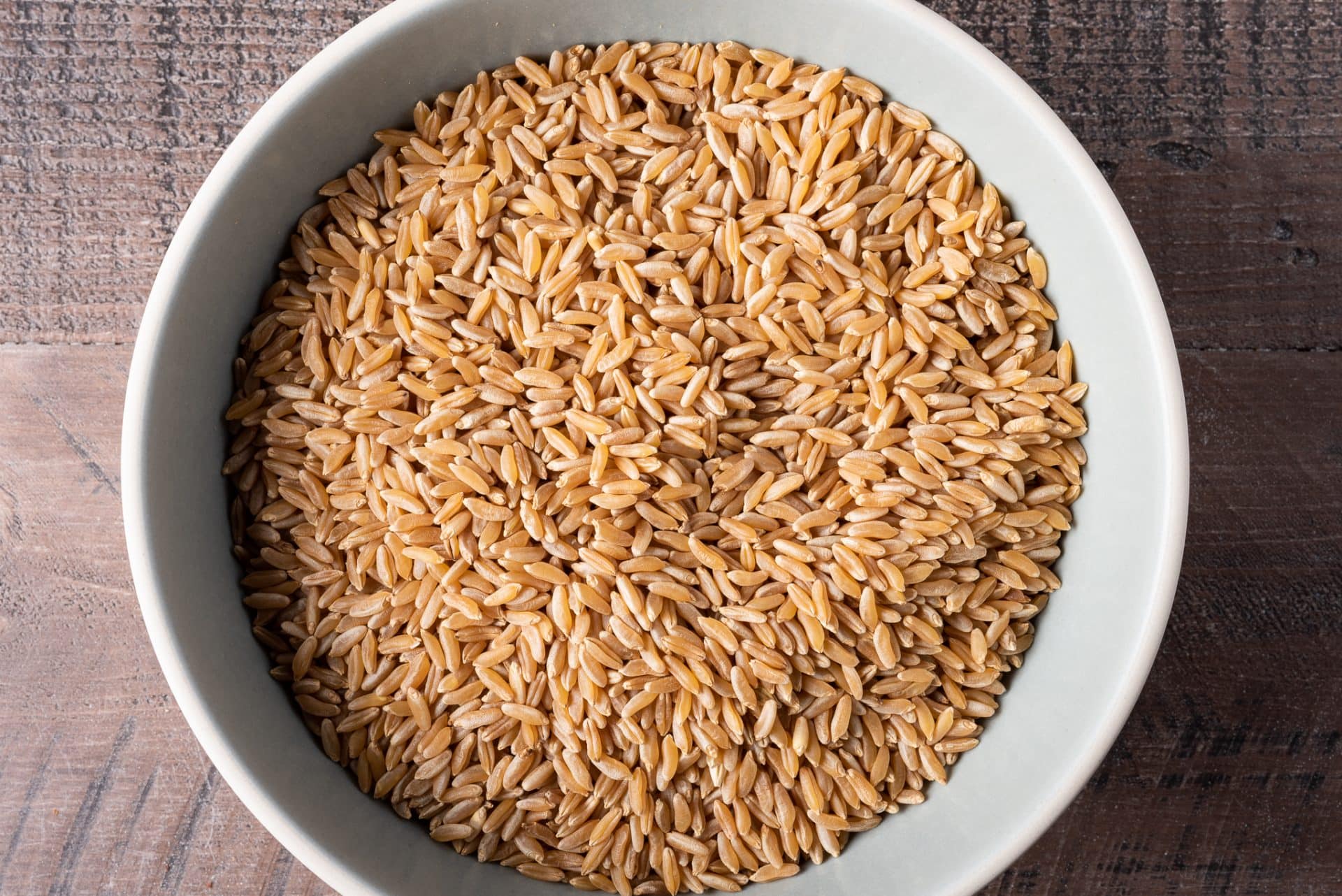
The best way to store whole grain berries
Whole grain berries last significantly longer than flour since the outer, protective bran layer is still intact. This bran layer is meant to protect the berry—a seed, after all—until it finds moisture that will begin seed germination if the conditions are right.
Because one of the enemies of whole berries is moisture—it’s best to keep them as dry as possible. My climate here in the Southwest USA is arid, so I have little worry about excessive moisture. And even though I live in a low moisture environment, I still inspect my grain if it’s been a while since I’ve used it to ensure the grain is still dry and no pests move in unnoticed.
Further, keeping the berries dry and cool (or cold) will prolong their shelf-life even further. I typically buy whole grain berries in large sacks that I split, placing some in an air-tight 6-quart container and then the rest wrapped in plastic and into the freezer.
The best way to store whole grain berries for the longest shelf life
Cold temperatures are best, but whole grain berries will have a long shelf life (I like to use them within 1-2 years) if kept dry and at room temperature.
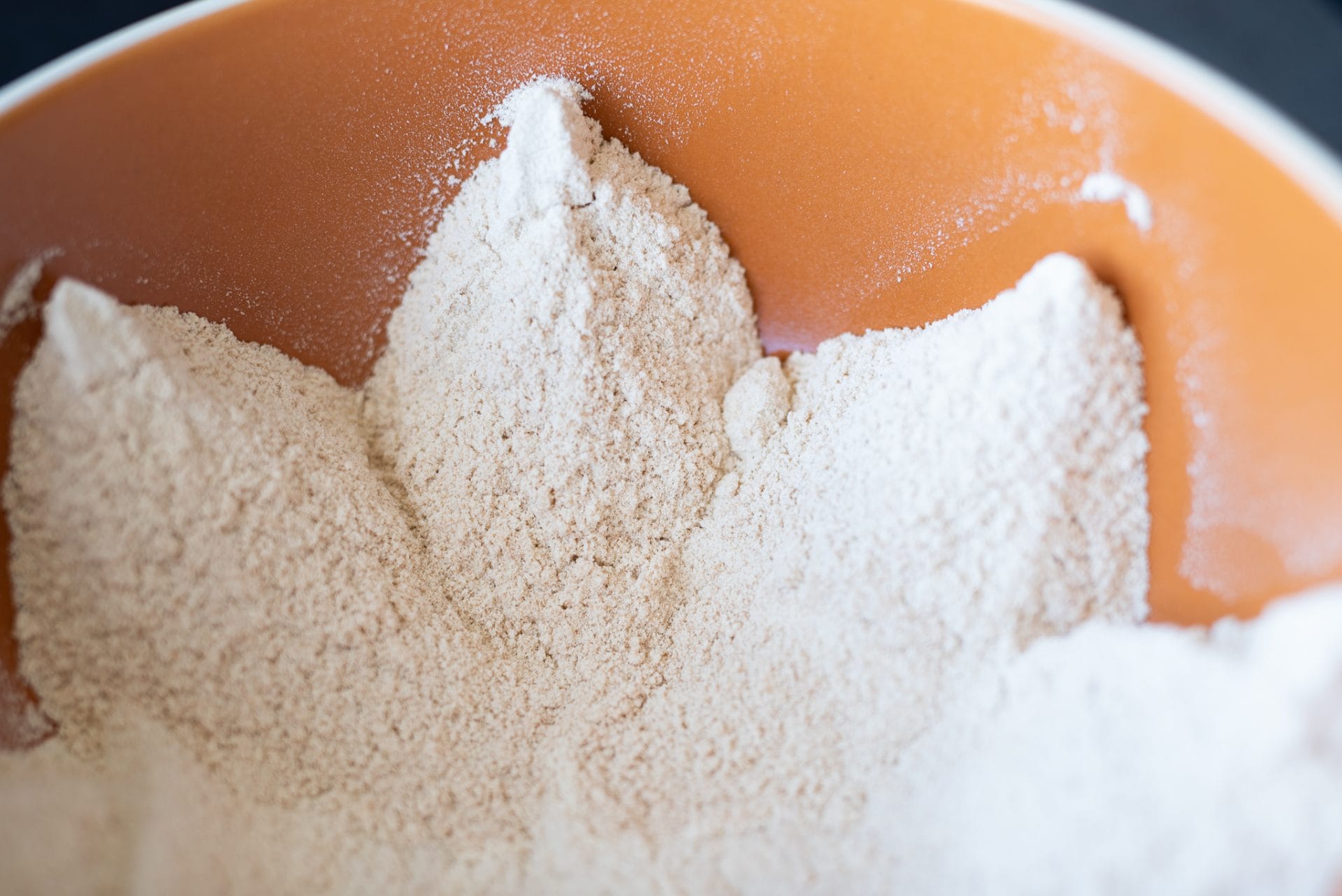
When is it best to use freshly milled flour?
When I mill flour fresh for bread baking, I like to use it that day or the day after. Related to my discussion above on lipids, using flour soon after milling ensures it will have the best flavor, aroma, and nutrition.
There have been plenty of times where I’ve milled flour in the morning only for something to come up, preventing me from using the flour that day or even the next. In this case, I’ll cover the flour in a container and place it in the refrigerator. The day I want to bake, I’ll take it out and let it come to room temperature before mixing it into my dough (or warm the mixing water to make sure I hit the desired dough temperature for the dough mix).
For more information, see my guide to working with freshly milled flour at home.
What containers are best to store flour (and grain)?
I typically use three different containers to store flour and grain, each a different size. This is what I look for with these containers (and I’ve tried a lot of containers over the years):
- they’re square-sided (which takes up less room when set side-by-side)
- they have an air-tight seal
- they’re extremely sturdy
The following containers have these three characteristics and, in the case of some, have been in my kitchen for almost 10 years now.
Small containers (for 5 pounds of flour)
My favorite containers for storing flour for immediate use are Oxo 4-quart (3.8 L) Pop Containers. I’ve been using these for more than a decade in my kitchen, and they’re durable, air-tight, and the perfect size to hold 5-pound bags of flour (what you’d find at the market). The lid has a small circle on the top that, when pressed, pushes down into the container to form an air-tight seal.
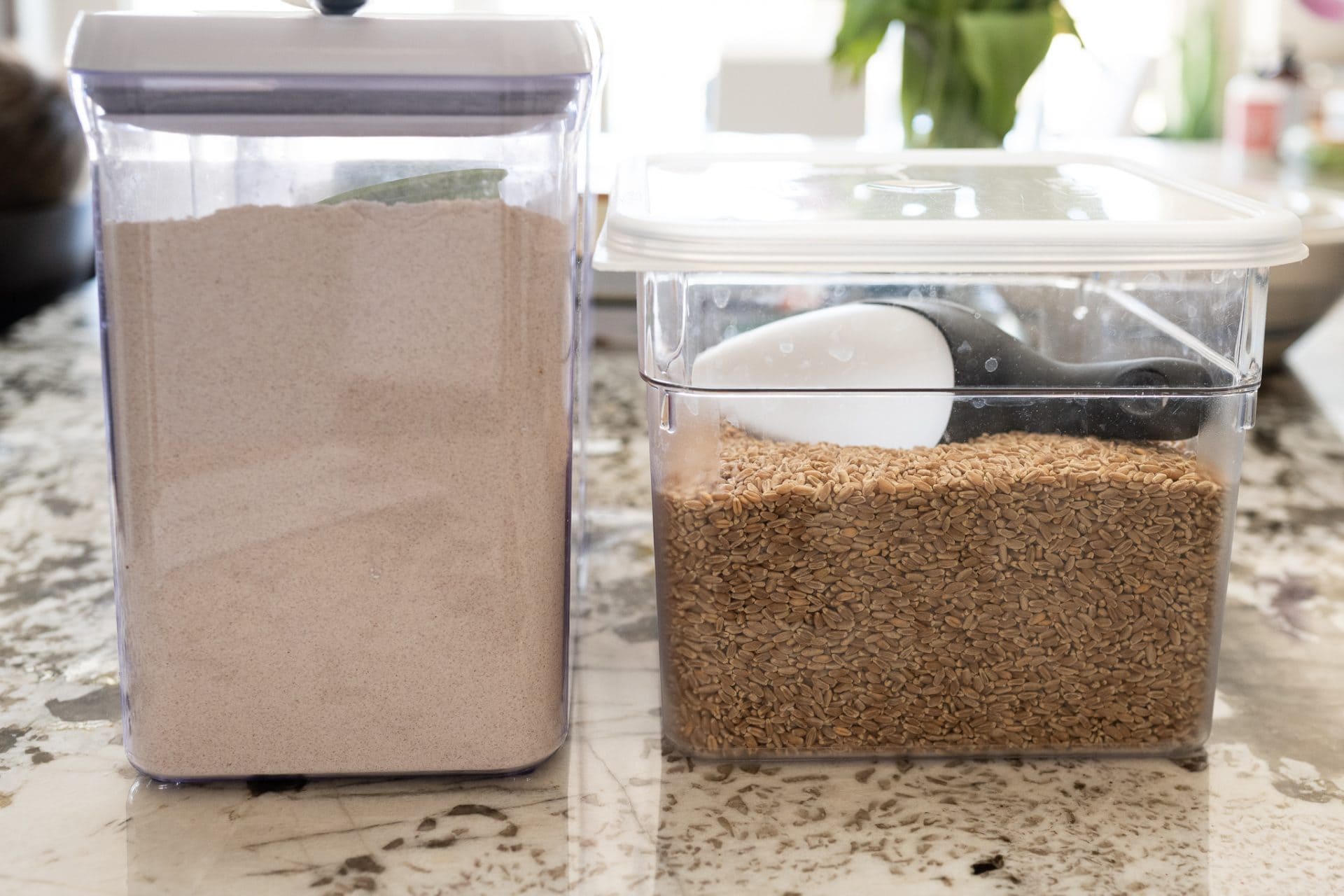
When I buy new sacks of flour, I transfer them directly to one of these containers because they’re effortless to open and close with an air-tight seal. Additionally, the wide opening up top makes for effortless scooping.
Medium containers (for a bit more than 5 pounds of flour)
For storing flour or grain a little over 5 pounds, I like these 6-quart Cambro food containers. These are about as robust a container as you want; they’re very sturdy and I’ve had the same ones for going on 10 years now. The lid snaps on tight and they stack compactly, perfect for a large freezer or the refrigerator.
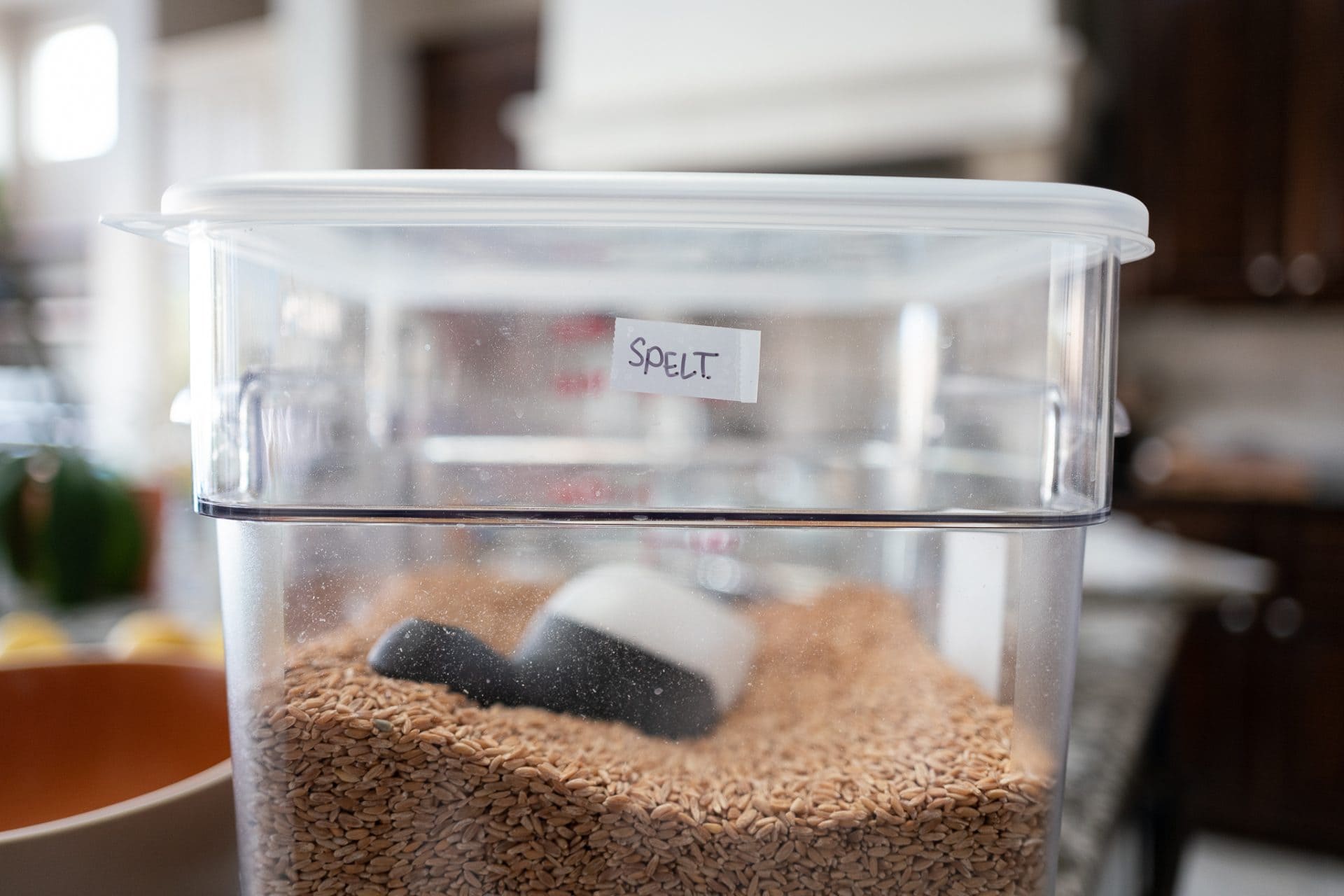
Large containers for significantly more flour or gain
These are about shin-level containers meant to hold significantly more flour or grain. When I order 25 or 50-pound sacks, I like to transfer a large amount of flour to these to keep in my pantry and place the rest of the bag directly into a freezer. Again, I turn to Cambro for these 18-quart polycarbonate containers for holding large quantities of flour or grain (and I like these Oxo scoops for easy distribution).
Additional baking items to store in the refrigerator or freezer
In addition to storing flour in the freezer (or refrigerator), I also like to store the following to keep them as fresh as possible.
| Item | Why store in the refrigerator or freezer? |
|---|---|
| Wheat bran or wheat germ | These are the parts of the wheat berry that contain the most oils and nutrients |
| Cracked buckwheat | Once the buckwheat groat is cracked open, it can spoil more readily |
| Polenta, corn grits, cornmeal | To prolong the shelf-life of these corn products |
What’s Next?
Looking for ways to store other baking-related things? Have a look at these guides for more practical baking guides:
- how to store your sourdough starter for short, medium, and long baking bread (or to backup your starter!)
- how to store bread to keep it fresh for longer
- how to freshly mill flour at home for baking
Happy baking!




